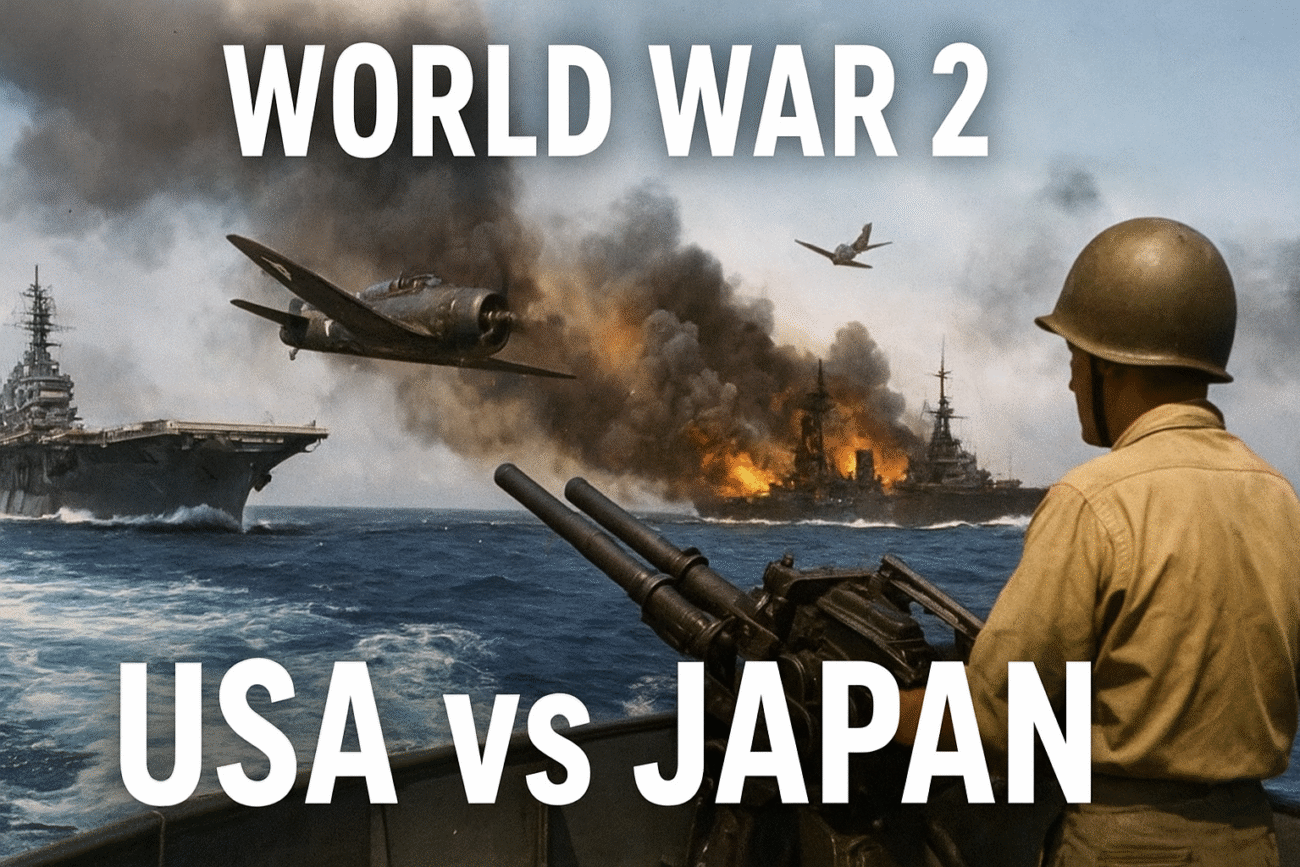World War 2 USA vs Japan: The Pacific War That Reshaped the World
World War 2 USA vs Japan was one of the fiercest battles for dominance in the Pacific.
It marked a turning point in global history, defining the modern balance of power.
The conflict began with ambition, aggression, and a devastating surprise that changed everything.
Both nations fought fiercely, driven by ideology, survival, and national pride.
Japan’s expansion across Asia in the 1930s alarmed Western powers.
Its invasion of China and Southeast Asia challenged U.S. influence in the Pacific.
America responded with trade embargoes, cutting Japan off from vital oil supplies.
This economic pressure pushed Japan toward a dangerous and desperate decision.
The Attack That Ignited the Pacific War
On December 7, 1941, Japan launched a surprise attack on Pearl Harbor, Hawaii.
American battleships were destroyed, and thousands of servicemen lost their lives.
The strike shocked the world and united the American people overnight.
World War 2 USA vs Japan had officially begun in flames and fury.
President Franklin D. Roosevelt called it “a date which will live in infamy.”
Within hours, the United States declared war on Japan, joining World War II.
The Pacific Ocean became a massive battlefield stretching from the Philippines to Hawaii.
Both nations prepared for a long, bloody struggle that would decide global power.
Turning the Tide: America’s Response and Strategy
The United States rapidly mobilized its industry and military might.
American factories produced ships, aircraft, and weapons faster than ever before.
By mid-1942, the U.S. Navy regained strength and prepared for counterattacks.
The turning point came with the Battle of Midway in June 1942.
American intelligence cracked Japanese codes, allowing a decisive ambush.
The U.S. Navy destroyed four Japanese aircraft carriers, crippling Japan’s naval strength.
This victory shifted momentum toward the Allies and restored American confidence.
It marked the beginning of Japan’s long and costly retreat across the Pacific.
The Island Battles: Step by Step Toward Victory
The U.S. adopted an “island-hopping” strategy to reclaim territories and cut Japanese supply lines.
Fierce battles erupted on Guadalcanal, Iwo Jima, and Okinawa.
Each island brought American forces closer to Japan’s homeland but at a heavy cost.
Thousands of soldiers died as both sides refused to surrender easily.
Japanese soldiers fought with unyielding loyalty, guided by the Bushido code.
Kamikaze pilots carried out suicide missions against U.S. ships in desperation.
Meanwhile, U.S. air raids devastated Japanese cities and industries.
By mid-1945, Japan’s resources and morale were nearly exhausted.
The Atomic Bombs and Japan’s Surrender
To end the war swiftly, the United States made a controversial decision.
President Harry S. Truman approved the use of atomic bombs on Japan.
On August 6, 1945, Hiroshima was destroyed in an instant.
Three days later, Nagasaki suffered the same fate.
The devastation forced Japan to confront the reality of total defeat.
Emperor Hirohito announced Japan’s surrender on August 15, 1945.
The formal ceremony occurred aboard the USS Missouri on September 2.
World War 2 USA vs Japan officially ended, closing a brutal chapter in history.
The Aftermath: From Enemies to Allies
The war left Japan in ruins but transformed the United States into a superpower.
American occupation brought democratic reforms and rebuilt Japan’s economy.
Over time, former enemies became close partners in trade and security.
This alliance reshaped the Asia-Pacific region for generations to come.
World War 2 USA vs Japan remains a defining story of courage, tragedy, and transformation.
It demonstrated the power of resilience and the dangers of unchecked ambition.
Its lessons on leadership, sacrifice, and diplomacy still guide the modern world.
The Pacific War forever changed how nations view war, peace, and global power.
